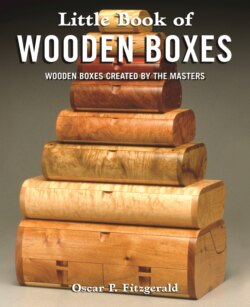Читать книгу Little Book of Wooden Boxes - Oscar Penn Fitzgerald - Страница 15
North American Indian Boxes
ОглавлениеAfter their exposure to Europeans in the mid-eighteenth century, the Eskimos or Inuit Indians in Alaska used ivory from prehistoric mammoths or walrus tusks to fashion small boxes for needles and snuff. Because of the absence of trees in the Arctic, wooden boxes were rare but a few driftwood boxes for tools, sewing supplies, and tobacco have survived. Like the ivory ones, they were often carved in the shape of a seal or walrus.
The Haida, Tlingit, Tsimshian, and Kwakiutl Indians living along the Northwest Coast of North America produced quite different boxes. Many of them were made for the feasting and exchange of gifts that characterized their great potlatch ceremonies. The best boxes were constructed of cedar, decorated with incised carving, inlaid with abalone shell, and then painted. The boxes were made of a single plank with three kerfs cut into the board so that it could be steam-bent into the shape of a rectangular box and then either fastened together at the open corner with pegs or laced up with cedar roots. Smaller boxes were made of ivory and carved with stylized bear, owl, raven, and killer whale images, all of which played a part in their cultural mythology.
